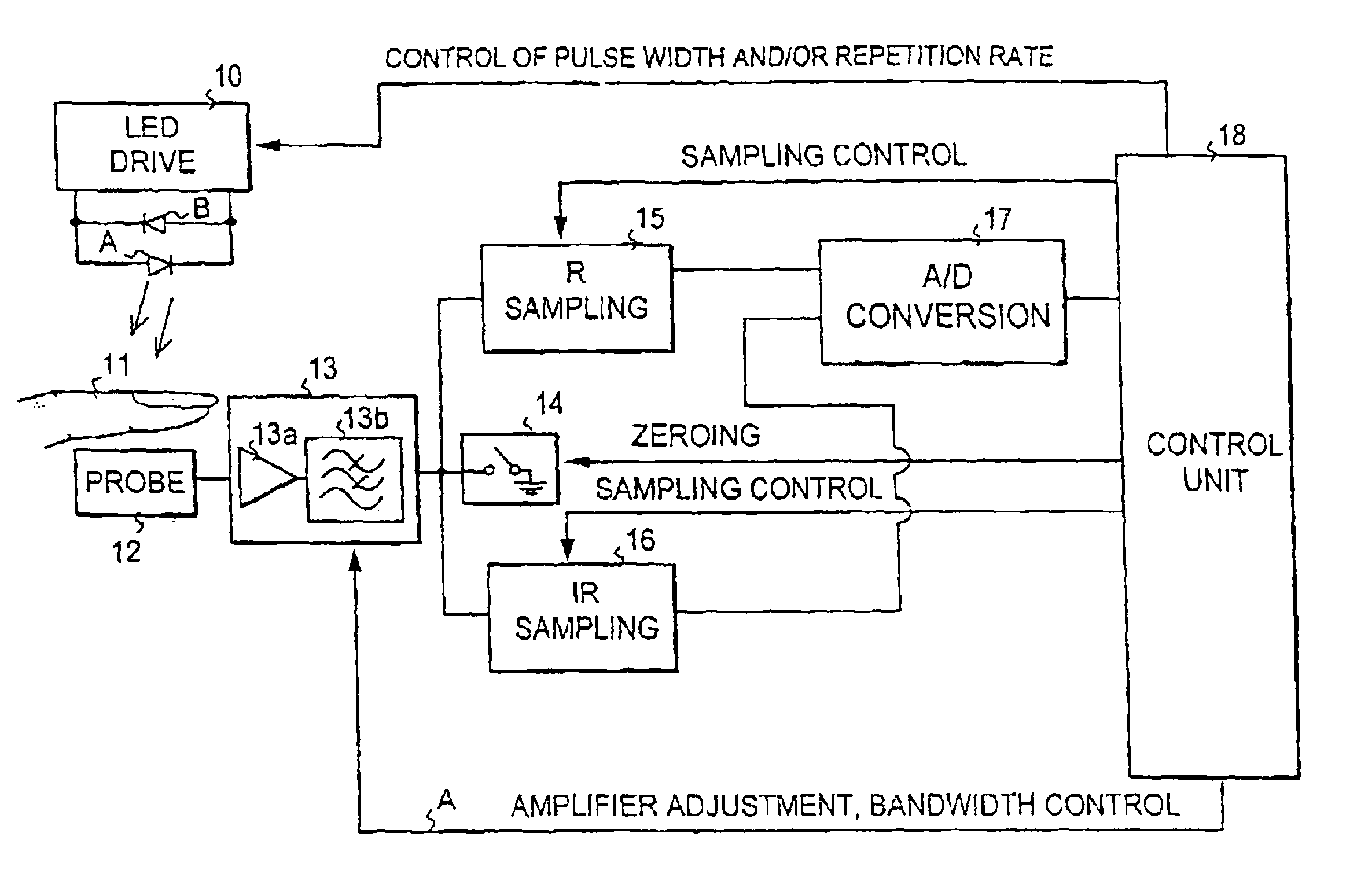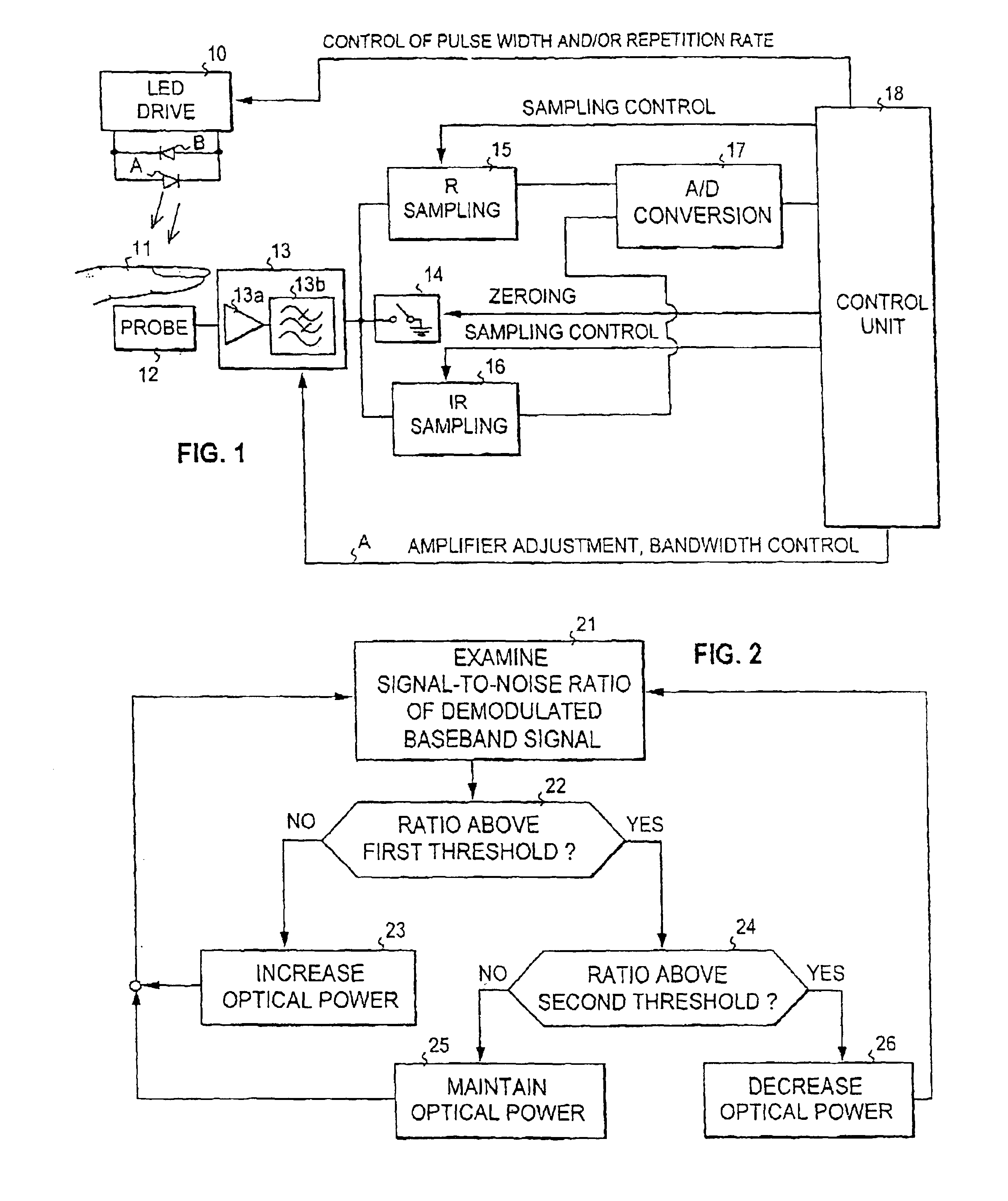Pulse oximeter
a pulse oximeter and oximeter technology, applied in the field of pulse oximeters, can solve the problems of power consumption and compromise of signal-to-noise requirements, and achieve the effect of maintaining good performance of the oximeter
- Summary
- Abstract
- Description
- Claims
- Application Information
AI Technical Summary
Benefits of technology
Problems solved by technology
Method used
Image
Examples
Embodiment Construction
[0049]FIG. 1 is a block diagram of one embodiment of a pulse oximeter according to the present invention. This embodiment is based on a traditional pulse oximeter where synchronous detection is used. At least two different LEDs, A and B, are driven by a LED drive 10. Each LED operates at a respective wavelength, and the light emitted by the LEDs passes into patient tissue, such as a finger 11. The light propagated through or reflected from the tissue is received by a probe 12 including a photodetector. The photodetector converts the optical signal received into an electrical signal and supplies it to an amplifier stage 13, which includes a controllable preamplifier 13a and a variable low-pass filter 13b. After the amplifier stage, an analog switch 14, controlled by the control unit 18, ensures that the signal is zeroed between consecutive pulses, thereby removing background light. The reception branch is then divided into two branches: the IR branch for the infrared signal and the R...
PUM
 Login to View More
Login to View More Abstract
Description
Claims
Application Information
 Login to View More
Login to View More - R&D
- Intellectual Property
- Life Sciences
- Materials
- Tech Scout
- Unparalleled Data Quality
- Higher Quality Content
- 60% Fewer Hallucinations
Browse by: Latest US Patents, China's latest patents, Technical Efficacy Thesaurus, Application Domain, Technology Topic, Popular Technical Reports.
© 2025 PatSnap. All rights reserved.Legal|Privacy policy|Modern Slavery Act Transparency Statement|Sitemap|About US| Contact US: help@patsnap.com



